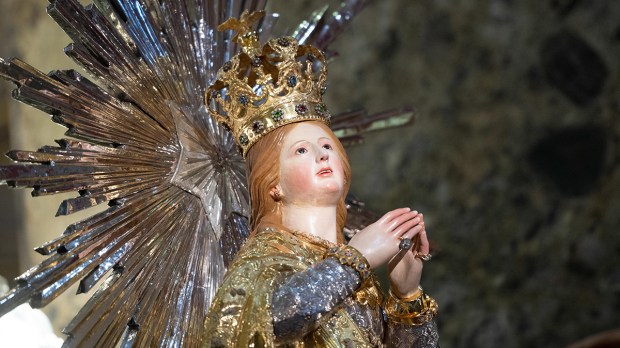The celebration of the Nativity of the Blessed Virgin Mary in the Greek Church goes back to, at least, the 5th or 6th century. St. Romanus (490-556) composed a hymn for this feast day, while St. Andrew of Crete (660-740) delivered famous sermons on the Nativity of Our Lady. Many scholars are of the opinion that the feast originated after the Council of Ephesus (431), in which Our Lady was given the title “Theotokos” (God-bearer) — in Latin Mater Dei (Mother of God).
Certainly, this feast was introduced into Western Christendom by the Byzantines, and by the 7th century, it was celebrated in Rome. Nevertheless, probably it was only during the 11th century that it became widely diffused in the countries of Western Europe.
Throughout the Maltese Islands’ millennial Christian history, the archipelago has seen rising in every corner of its territory shrines, collegiate basilicas, parishes, churches, chapels, and cave churches dedicated to the feast of the Nativity of Mary. One has to also keep in mind that in Malta, Byzantine influence reached its zenith from the 4th to the 8th century of the Christian era, so there is a very good possibility that the Nativity of Mary was already celebrated during this period.
Victory over victory with Our Lady
On September 8, 1565, the feast day of the Blessed Virgin’s Nativity, the hitherto invincible Ottoman Army of Suleyman the Magnificent (1494-1566) was defeated and repulsed.
The story begins on May 18, 1565, when an armada of over 200 warships was sighted off Malta. An invading Ottoman Expeditionary Force estimated to be 30,000 strong landed, and soon siege preparations began. However, the Knights of Saint John and the Maltese prevailed against all odds and, after a terrible siege, the greatest superpower of the day abandoned the fight, accepted defeat, and sailed back home.
Even the Grand Master, Jean Parisot de la Valette (1495-1568), himself didn’t believe this was a coincidence! In fact, during the heroic struggle to defend the Holy Faith and Western Christendom, he found spiritual solace and prayed for guidance before the 12th-century Byzantine icon known as Damaskinì (Our Lady of Damascus or La Damascena).
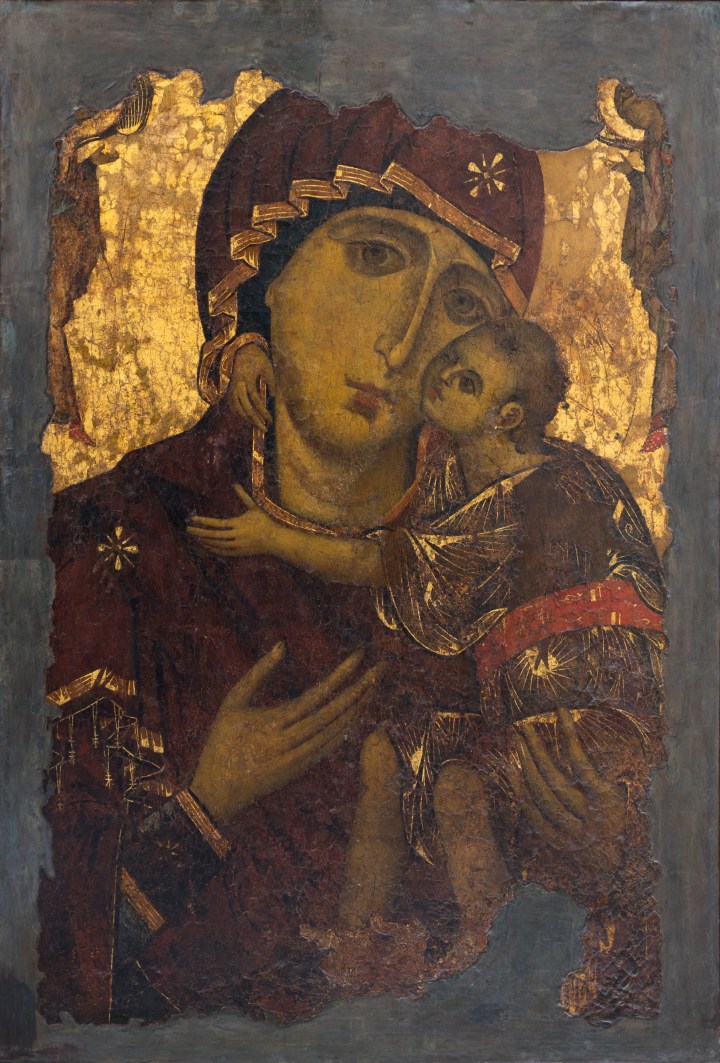
Actually, on the lifting of the siege on that fateful day of September 8, he laid down his hat and his sword on the altar steps as votive offerings to show his gratitude and thanksgiving to Our Lady for delivering him, the defenders, and the whole of Western Christendom from the Ottoman Turks.
This victory was won against impossible odds and nobody believed that the Turkish armada could be beaten by the relatively small garrison of the Knights of Saint John. It was a miracle — a grace granted by the Blessed Virgin to her devout children. The Ottoman superpower was defeated by the smallest of all Christian principalities.
A victorious birthday
Immediately, the Maltese and the Knights added another title to their Heavenly Mother and began to call her Our Lady of Victory (Maltese: Il-Madonna tal-Vitorja).
In 1566, La Vallette laid the foundation stone of his new city, which later was given his name to honour the great war leader – Valletta. He ordered that the first building in his city was to be a church, which was erected on the foundation stone of the Fortress City, and he also financed the construction of this church. It was dedicated to the Nativity of the Blessed Virgin, and since it was on the 8 September that the Turks lifted their siege, it was most appropriate to hail the Madonna as Our Lady of Victory.
On this occasion, the city of Senglea took the title of Citta Invicta (Undefeated City). The citizens of Senglea also erected a church in honor of the Virgin’s Birth and Our Lady of Victory, to serve as a memorial of her intervention to help them achieve this memorable triumph – today’s parish basilica and Marian sanctuary.
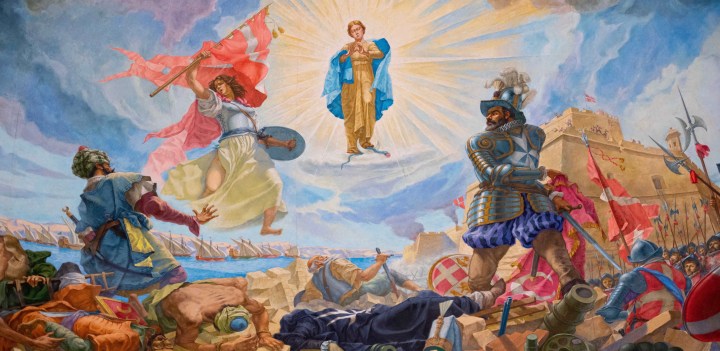
Child Mary
The titular statue of Our Lady of Victory of the Senglea Basilica is truly a unique sculpture. It is built on a dainty, almost miniature scale, its colourful origin going back to 1618. (The Basilica is also the home of the miraculous statue of Christ the Redeemer.) Owing to its small size, the titular statue became widely known as Maria Bambina (Child Mary) or just il-Bambina (The Little Girl).
The happenings connected with the cherished statue were passed down from one generation to another. It was not tailor-made for Senglea, or any other church. According to ancient manuscripts, archived in the parish, the Bambina was found floating together with other remains of a galleon, which was shipwrecked and smashed on one of the Dalmatian islands, which today form part of Croatia. A manuscript records that the image was probably an embellishment of the rear part of a Christian galleon. The captain of an Austrian galley caught sight of the remains and retrieved the statue from the sea. As it was a religious image, he decided to donate it to a church on the first Christian land he sailed to.
Malta was the captain’s next destination, and the statue was donated to the Senglea parish Church, following a request of two of his passengers, who happened to be Sengleans. Coincidence? This is for the readers to judge. Incredibly, at that time, the parish lacked both a statue and a painting of the Virgin Mary. The statue was placed on a new altar, which became known as the altar of Our Lady of Perpetual Help, due to the continuous graces and persistent help granted by the Virgin Mary.
Of pilgrimages, processions, and victories
Extraordinary events, registered in the parish’s archives, are connected to the beloved titular statue of the Senglea parish. In 1718, the Marian image was carried in a penitential pilgrimage to the Sanctuary of Our Lady Tal-Ħlas in Qormi. This was done following a decree issued by the bishop after a long period of disastrous drought. He instructed all the confraternities of Malta to hold a general votive procession. While the pilgrimage was on its way back to Senglea, it began to drizzle, and then started raining heavily.
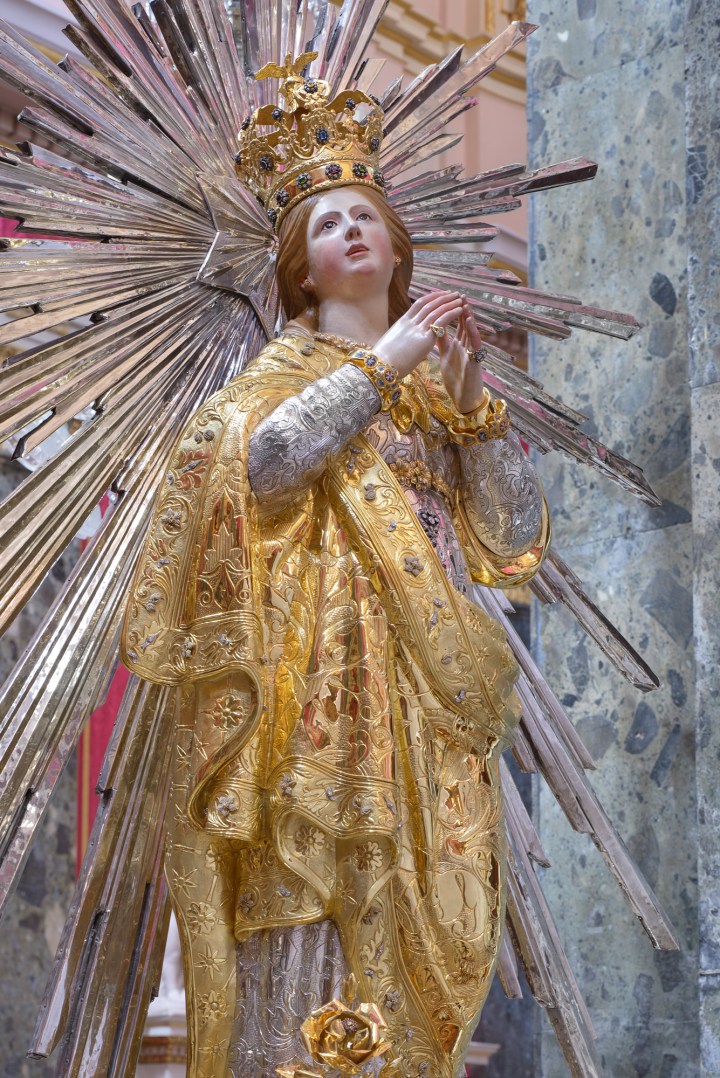
A little less than a hundred years later, in 1813, a deadly plague was devastating Malta.The Senglea chapter solemnly vowed that if the town was spared from this affliction, it would perpetually hold three votive processions, one of which was that with the Marian image, to be held annually on September 8. Through divine protection and with Our Lady’s intercession, Senglea was spared, and the pledge has been observed ever since.
But Our Lady kept giving clear and astonishing signs of her assistance and protection to Malta, and the world, on the feast of her Nativity and Victories. This time it was 1943. On September 8, Italy unconditionally surrendered to the Allies. The archpriest of Senglea received the much-awaited message that Malta was now safe and free, during the procession with the titular statue, through the bombed out streets of the city.
An extraordinary coronation
On September 4, 2021, Senglea celebrated the 100th anniversary of the solemn coronation of the treasured Maria Bambina. A century before, the city’s parish church was elevated to a Marian sanctuary, when Malta’s bishop crowned its cherished miraculous titular statue. The practice of crowning particularly significant religious images started in the mid-17th century. The first in Malta was that of Our Lady of Mount Carmel of Valletta (1881), followed by Saint Luke’s Madonna in Mdina Cathedral (1895), Our Lady of Mellieħa (1899), the Immaculate Conception of Cospicua (1905) and the Madonna Tal-Ħerba of Birkirkara (1910) — which are all paintings and not statues. In Senglea, regardless of the ancient tradition of devotion, and the fervent desire to have the Bambina crowned, no formal request had ever been submitted.
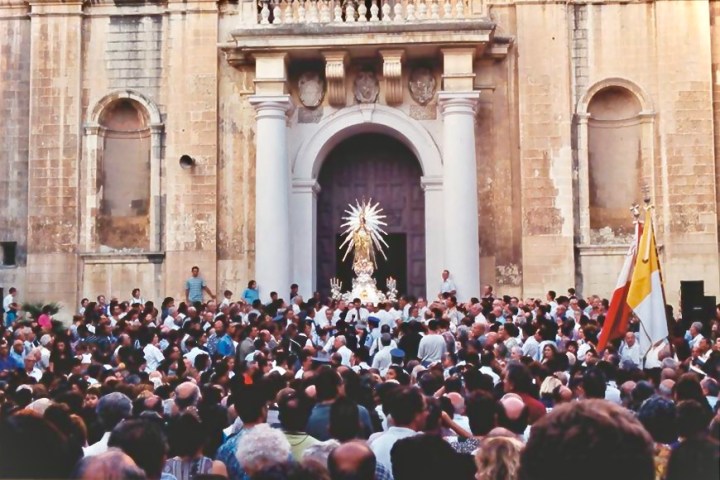
In 1915, Monsignor Mauro Caruana, OSB, who had childhood memories of Senglea, became Malta’s Bishop. In no time, he was swamped with supplications to open talks with the Vatican to have the Bambina crowned. Yet, it was not the time: The First Great War was ravaging the world. Shortly after the end of the war, Senglea’s Collegiate Chapter urged Bishop Caruana to submit the request, and by early 1920 it was received by the Vatican. The Holy See’s official reply was issued on April 25, 1920 (Pontificate of His Holiness Benedict XV), and Malta received the Vatican Chapter’s decree on May 7, 1921. Maria Bambina became the only statue in Malta to be solemnly crowned by a special decree issued by the Holy See.
The prompt response from Rome astonished all concerned. In fact, in a letter the Diocesan secretary wrote to the Archpriest of Senglea, he affirmed, “I remained surprised how this petition was approved in such a short time, and it came to be as we all wished. This is truly a sign that the Blessed Virgin wants to compensate the people of Senglea for their love towards her.”
Moreover, the Holy See’s decree was an exaltation of the devotion and extraordinary events surrounding Maria Bambina. Following are a few excerpts which speak for themselves:
“… in the collegiate church and parish of the city of Senglea in your diocese, there is a statue of Our Blessed Virgin Mary, well known for the miracles and graces received by those seeking her intercession.”
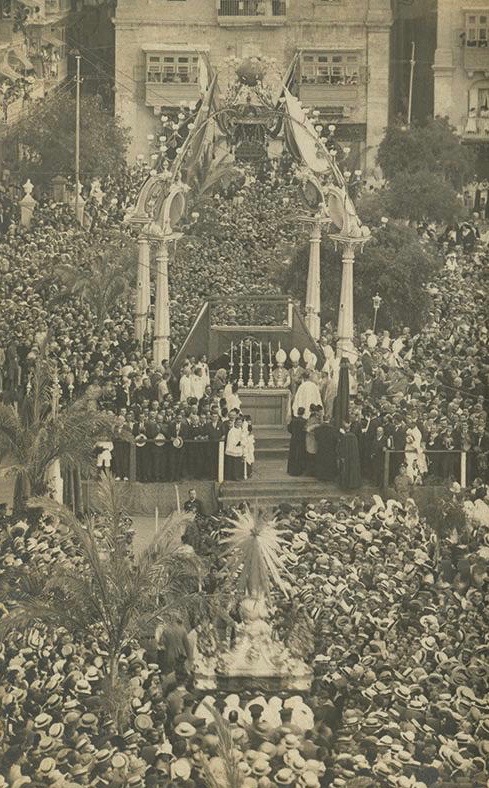
[After examination the Vatican Chapter] “… discovered how ancient is the worship towards this statue and the miracles and graces attributed to this image.”
“… ascertained that the holy image holds whatever is necessary for a solemn coronation.”
“… For this reason, to the glory of the most Holy Trinity and in order to further honor the Mother of God, we unanimously decide and order that the holy statue of the Blessed Virgin Mary, Maria Bambina, be crowned by a gold crown.”
Embellishment, restoration, and conservation
The parish and the people of Senglea never ceased to do their utmost to embellish and take care of their “Little One.” For instance, in the year 1804, Maltese sculptor Mariano Gerada chiseled a base with clouds and angels; and between 1984 and 1996 the statue’s clothing was embellished with embossed plates of 24-carat gold and sterling silver sheets, the work of silversmith Giovanni Bartolo. Archpriest Canon Reverend John Sladden had a desire to coat the Bambina with gold and silver, and thanks to the generosity of the Sengleans, and their love for the Heavenly Mother, this ensued in 1996. But the Sengleans’ gratitude towards their Little One didn’t stop there: In 2018, on the effigy’s 400th anniversary, the wings of the angels, the serpent, and ornamental flowers were made of solid gold.
However, throughout the statue’s long history, it was also subject to incongruous restoration interventions and accidental damages. In 2016, the very talented and professional Maria Grazia Zenzani and Valentina Lupo, of the restoration and conservation firm Atelier del Restauro, were commissioned by Canon Reverend Robin Camilleri (Archpriest of the Senglea Parish) to assess the state of conservation of the statue and propose a plan of action to recover the work of art.
Several scientific analyses were carried out including a tomographic inspection, using a medical CT-Scanner, X-rays and SEM-EDS stratigraphic analysis of the paint layers. It transpired that the wood, including that of the face, was carved out of an entire trunk of a Limewood tree (Tilia.sp.)
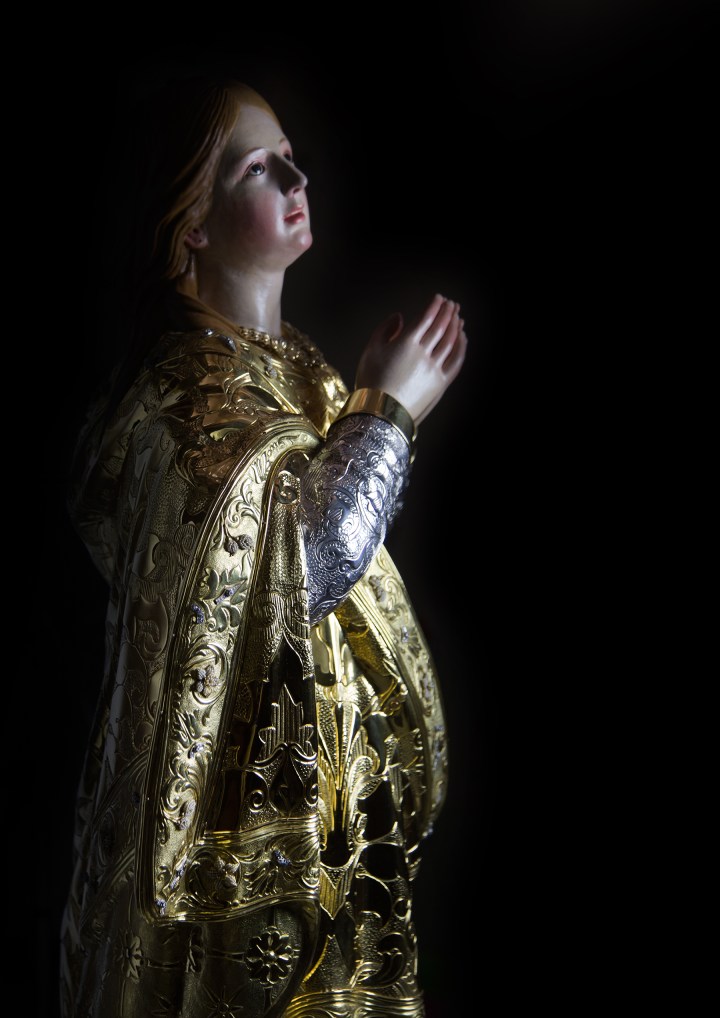
Interestingly, in central and northern Europe, limewood was the most common type of wood utilized for devotional sculptures. Also, the works revealed beautiful details that had been “buried” under thick over-paintings. Maria Grazia and Valentina completed their remarkable restoration and conservation works in mid 2017, and the rejuvenated effigy was inaugurated on August 12 in the Bambina’s Basilica.
A final note
The gaze of Maria Bambina pierces the hearts of those who beseech her intercession. Numerous graces and miracles have been granted through prayers and appeals of her children. It is not surprising that droves of pilgrims and devotees gather outside the Basilica on September 8 to pray and to show their love to the Heavenly Mother.
I would like to heartily thank Can. Rev. Robin Camilleri, Archpriest of Senglea, for his invaluable help and support, which made this article possible.
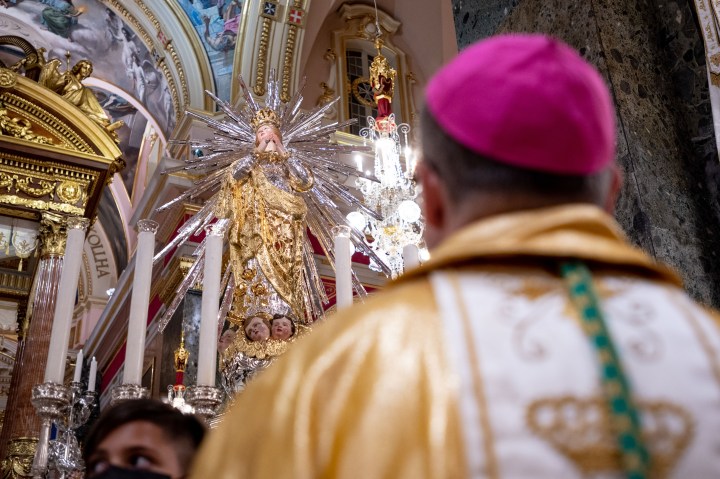
References
Lupo, V., & Zenzani, M.G. The conservation and restoration of the oldest titular statue of the Maltese Island : Senglea’s 17th century effigy of Maria Bambina. Marija Bambina Senglea, festa 2018, 44-45.
Mangion F. Senglea’s statue of Maria Bambina. Times of Malta, September 6, 2015
Mangion F. Statue of Maria Bambina in Senglea crowned a century ago. Times of Malta, September 5, 2021
Marija Bambina – Mitt Sena Inkurunata 1921 – 2021 (Maria Bambina – A Hundred Years Crowned). Parish Church of Marija Bambina, Senglea. Malta 2021
